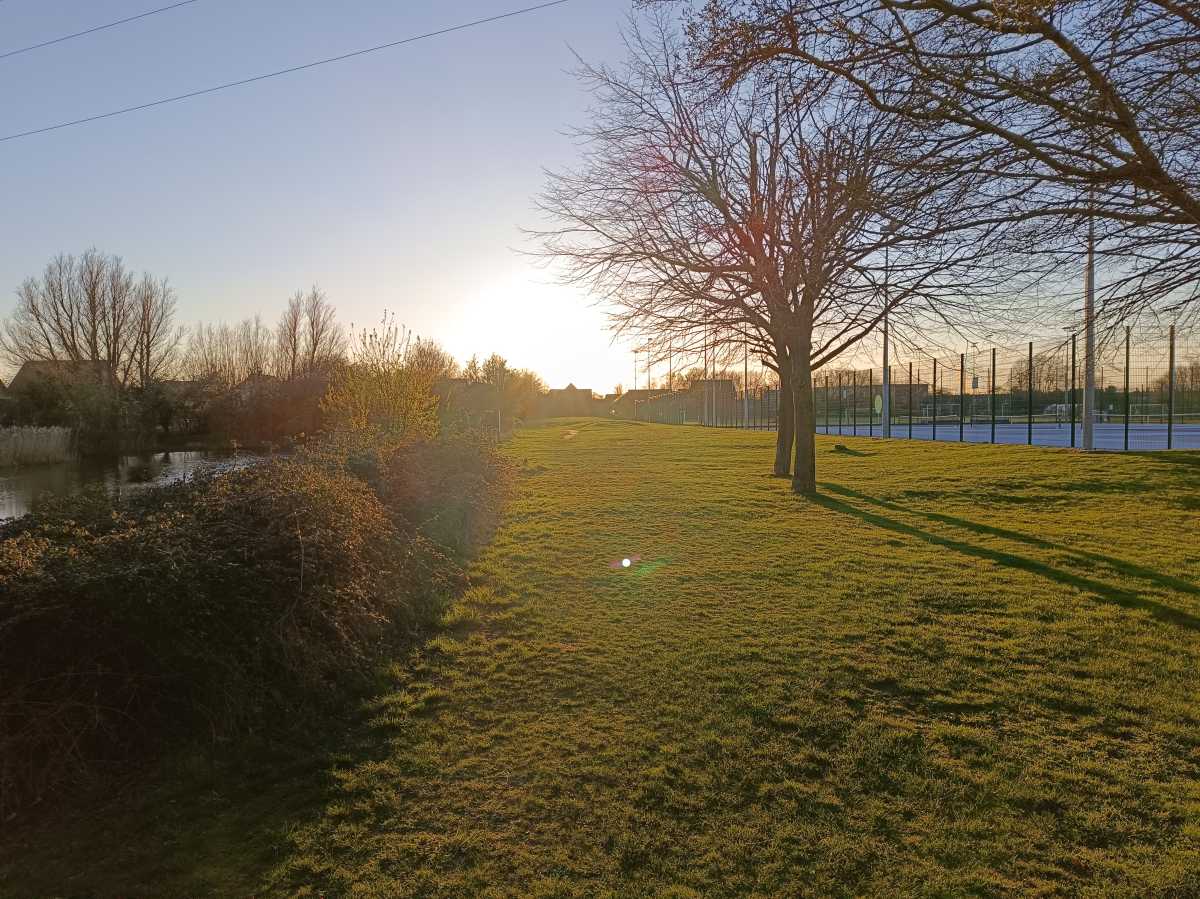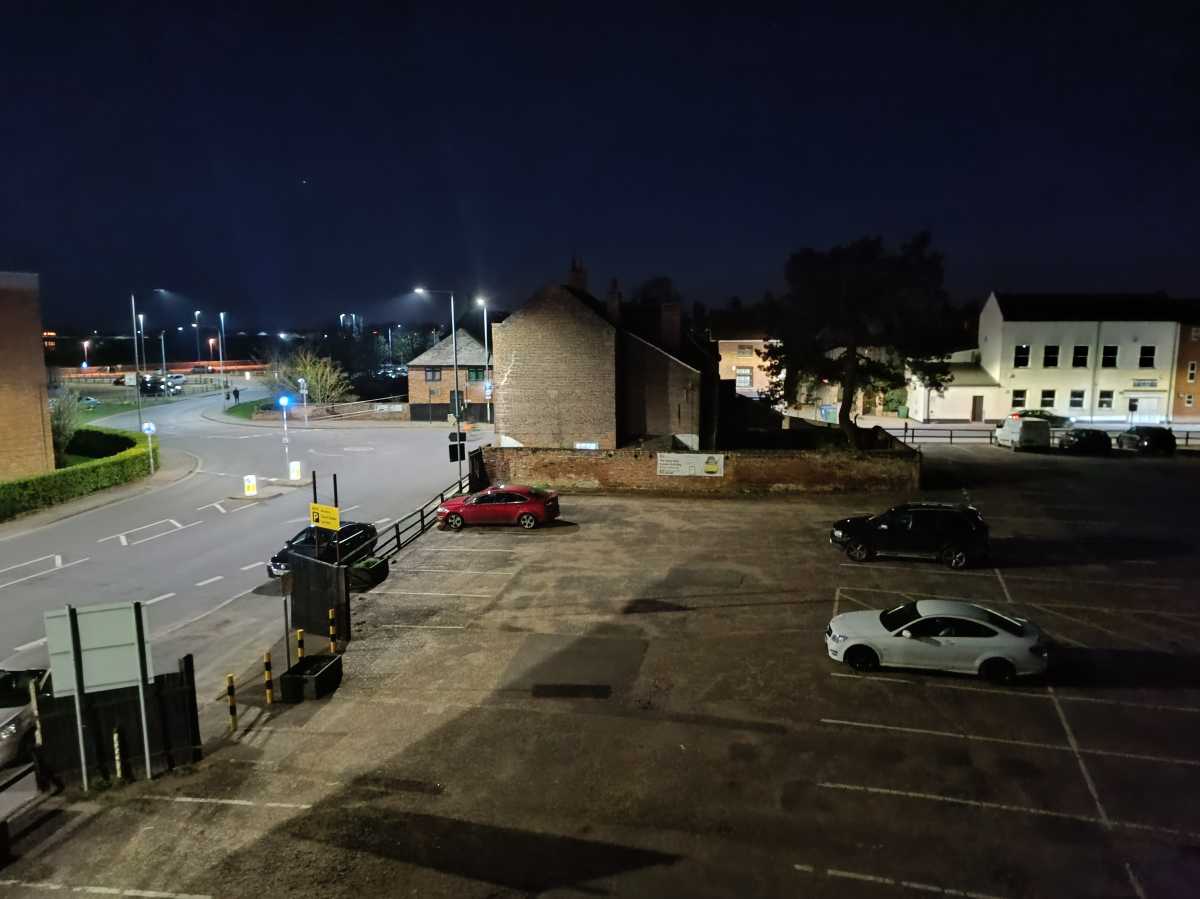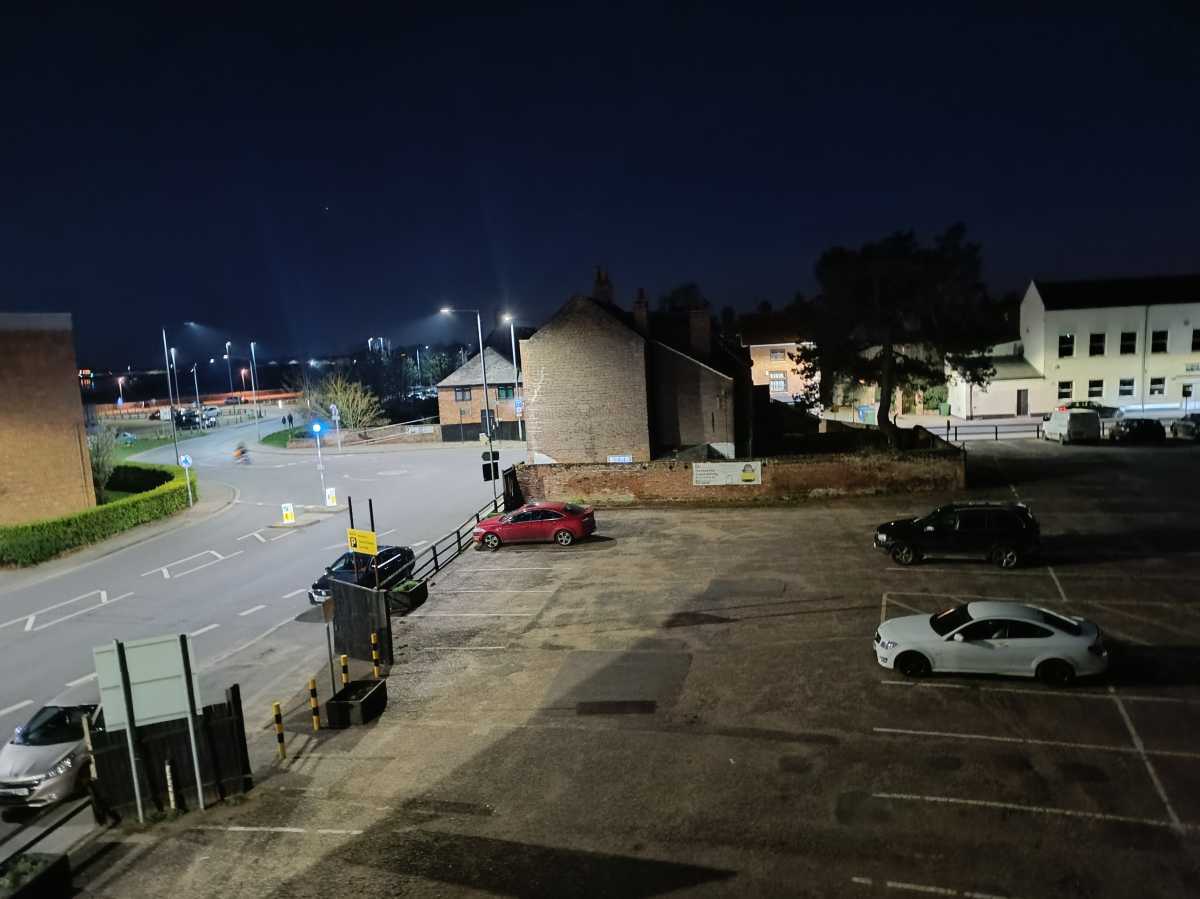Expert's Rating
Pros
- Slick, premium design
- Superb 120Hz flat display
- IP53 water-resistance
- Impressive main camera
Cons
- Frustrating MIUI software
- Limited to 128GB storage
Our Verdict
The Note 12 Pro is a clear step down from the Pro+, but also significantly cheaper. It’s a great phone for the money, although the same can be said for plenty of similarly priced devices.
Xiaomi’s Redmi Note 12 series includes a total of four phones in Europe, plus several others in China.
The 12 Pro+ and its 200Mp camera get most of the attention, but it’s important not to ignore the cheaper models. At £339/€399, the regular Note 12 Pro is noticeably more affordable, with camera and charging speed the most obvious compromises.
But from testing the phone, it’s remarkable how quickly those downgrades fade into the background. It makes the 12 Pro a real mid-range contender, with the strength of the competition the main obstacle to buying one. Here’s our full review.
Design & build
- Glass front and back
- IP53 rating
- 3.5mm headphone jack
The Redmi Note 12 Pro has a near-identical design to the 12 Pro+, the most expensive model in the series. That reflects very well on the former: the 12 Pro looks and feels just like a flagship phone.
Perhaps the only compromise compared to high-end phones is that the glass back isn’t the strengthened Gorilla Glass standard. The Note 12 Pro is more susceptible to damage as a result, but I’d feel confident in it surviving most drops.
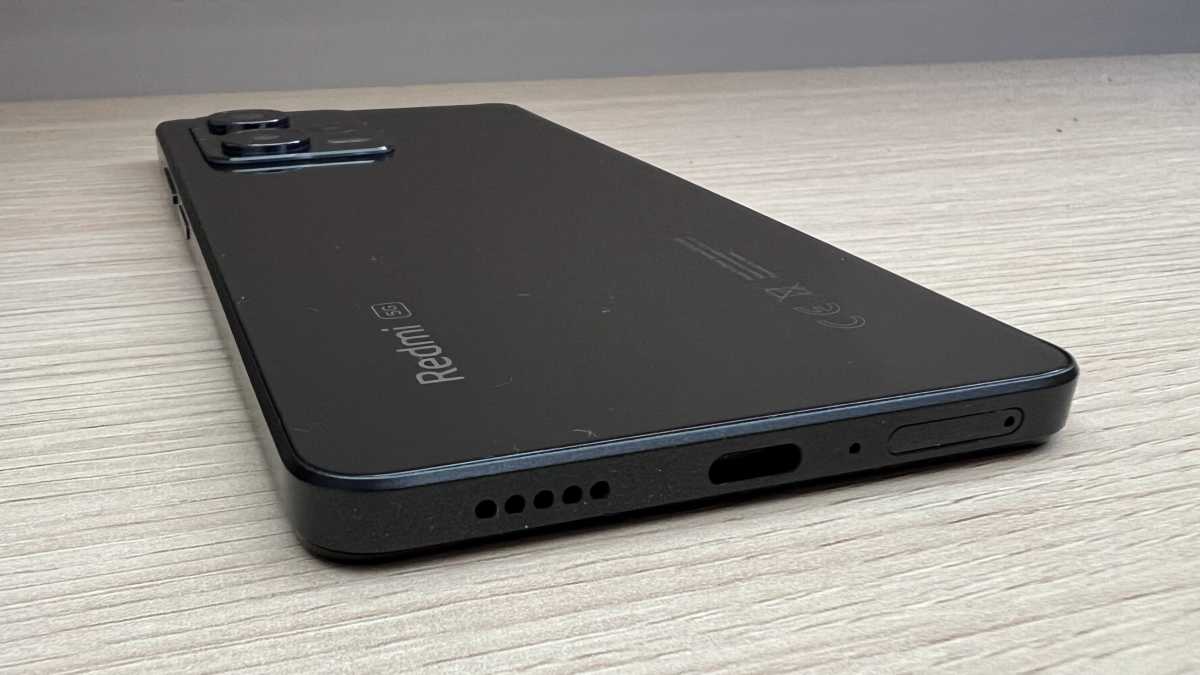
Anyron Copeman / Foundry
You also get impressive ingress protection for the price. An IP53 rating means it can handle dust well, along with splashes of water, though it won’t survive a full dunk in a bathtub.
Opting for plastic rather than aluminium on the sides adds grip to what would otherwise be a slippery phone. It means you can get away without using a case, although it’s much more comfortable to hold with the silicone case included in the box applied.
There are three colour options to choose from, but the ‘Midnight Black’ version you see in photos is the most reflective by far. It’s not an exaggeration to say that the back of the phone could double as a mirror.
Unless you put on a case, you’ll also have to contend with lots of fingerprint smudges and other dirt. The 12 Pro quickly accumulates both, so be prepared to clean the back of the phone just as much as the front.
The 12 Pro looks and feels just like a flagship phone
Fortunately, both these concerns can be addressed by opting for a ‘Polar White’ or ‘Sky Blue’ finish instead. These shimmer in the light rather than showing a reflection of your environment. Xiaomi could work on making the CE information and Redmi branding more discreet, but both are easy to ignore.
But whichever colour you choose, the camera module is the defining feature here. It’s not particularly attractive, but impressively sits almost flush with the back of the phone. If you do use a case, there’s no wobble at all when using it face up on a table – that’s something I can really appreciate.
At 187g, the Note 12 Pro is significantly lighter than most phones with such large displays. It feels slightly less premium as a result, but I certainly don’t miss the extra bulk that comes with it.
But with no in-display fingerprint sensor, you’ll be relying on the physical one built into the power button instead. It’s not quite as convenient, but easy to set up and actually more reliable. This doesn’t feel like a compromise at all.
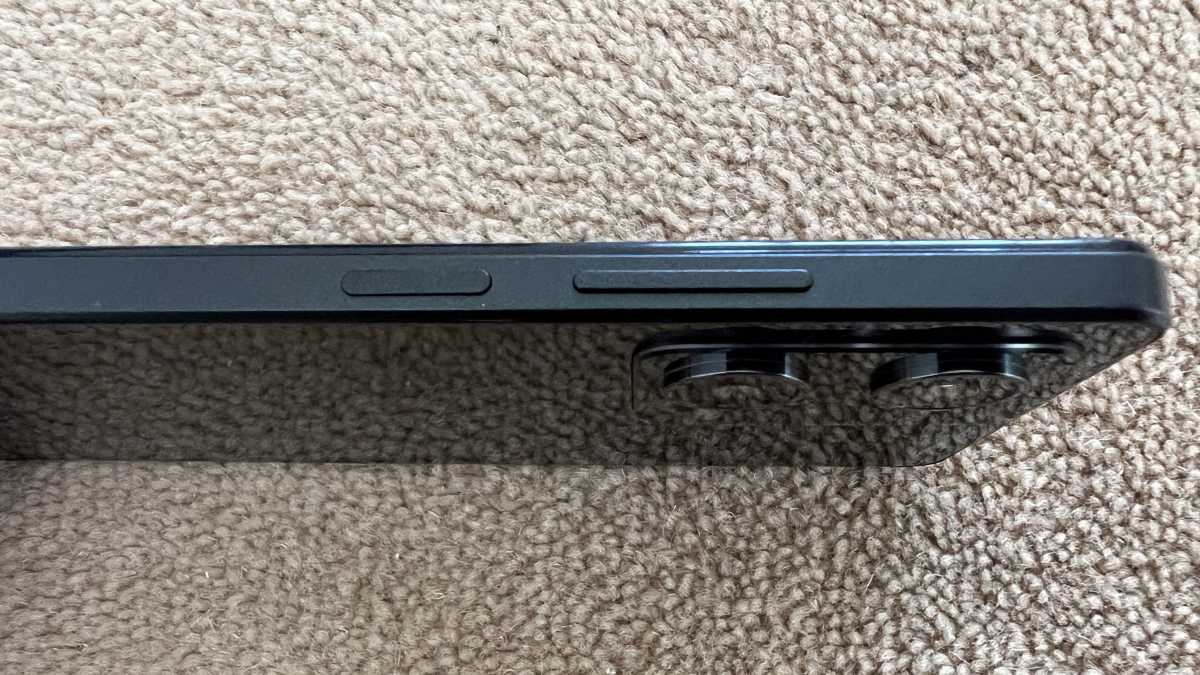
Anyron Copeman / Foundry
As expected, there’s a USB-C port for charging. But it’s a pleasant surprise to see the 3.5mm audio jack retained. If you have great wired headphones that rely on it, not needing an adapter is great.
Elsewhere, the vibration motors on the Note 12 Pro are about as good as you can get on a phone. Their subtle haptic feedback makes locking your phone, multitasking and selecting apps feel that bit more immersive.
Screen & speakers
- Excellent 6.67in OLED screen
- 120Hz refresh rate
- Decent stereo speakers
Impressively, the Note 12 Pro has a display that wouldn’t look out of place on almost any high-end handset.
It’s a 6.67in, 1080×2400 OLED panel. You will find higher resolution screens, but they’re not a necessity for most people – especially at this price point.
However, a key difference compared to many rivals is the flat display. Most phones opt for a curved version, which makes for a slightly more immersive viewing experience as content stretches right to the edges.
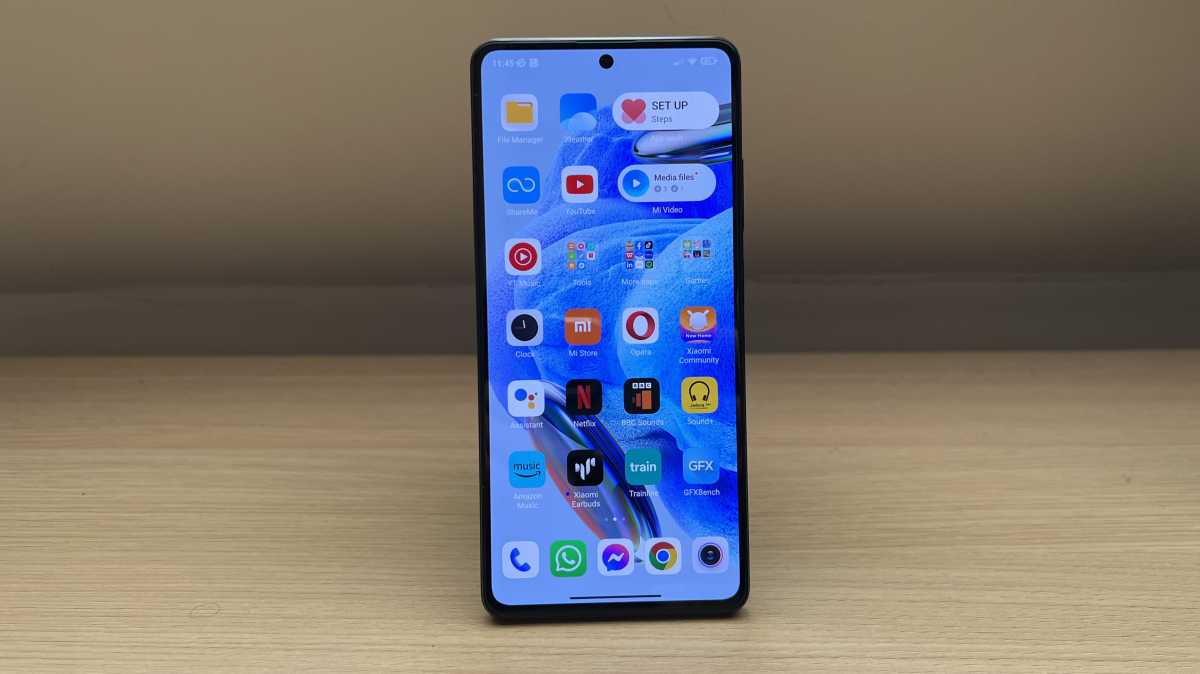
Anyron Copeman / Foundry
But I personally prefer the Note 12 Pro’s approach, which still looks great but also maintains an attractive symmetry. Equally sized slim bezels all the way round the edge of the screen just look better in my opinion.
In almost any situation you can think of, the display looks superb. Rich and vivid colours help games, videos and social media come to life, yet it retains plenty of detail and some impressive viewing angles.
It’s interrupted only by a small hole-punch camera, but it’s put to good use. As well as taking selfies, it can also be used for face unlock.
Opting for OLED means contrast and vibrancy are both top notch, although you can dial down the latter by choosing a different colour scheme in Settings.
Something else you’ll find there is a 120Hz refresh rate, which can be manually enabled or set to automatically switch between 60- and 120Hz depending on what you’re doing. The auto mode helps conserve battery life while retaining the extra slickness and fluidity you get from a high refresh rate screen.
In almost any situation you can think of, the display looks superb
Xiaomi claims you can get up to 900 nits of peak brightness, and you can comfortably use the phone outside in almost all lighting conditions, especially with a dedicated ‘sunlight mode’ when you turn off auto brightness.
Like the 12 Pro+, the regular 12 Pro has dual stereo speakers, with the usual downward-firing grille joined by a second on the top of the phone. This is a superior option to relying on the earpice, and it helps the phone deliver some impressive audio.
Don’t expect room-filling sound, but crystal-clear vocals and detailed music are very much possible. There’s even a decent hit of bass, making the phone great for casual videos or browsing social media. If you need better quality, you can always use Bluetooth or the 3.5mm audio jack.
Specs & performance
- MediaTek Dimensity 1080 5G chip
- Impressive performance, including some gaming
- Only 128GB of non-expandable storage
The Note 12 Pro is powered by MediaTek’s Dimensity 1080, a 2022 chip that’s specifically designed for mid-range phones.
The Dimensity 1080 is plenty capable enough for everyday tasks, such as messaging, emails, social media and watching videos, plus multitasking and quickly switching between apps.
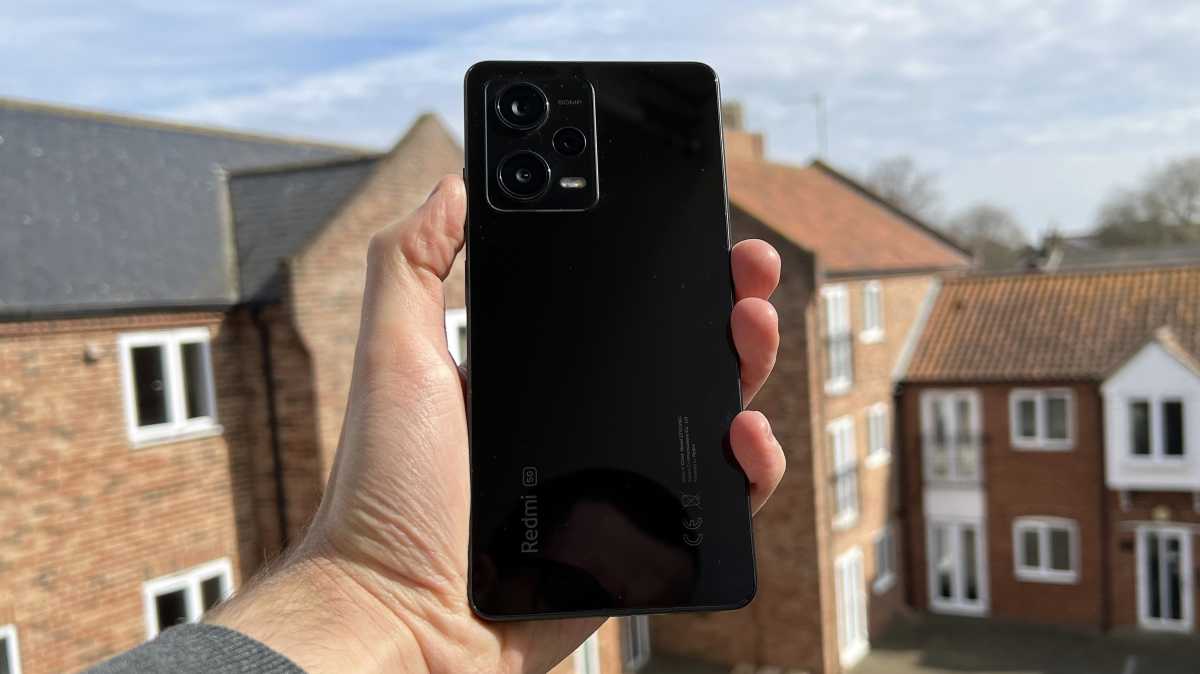
Anyron Copeman / Foundry
Combined with the 120Hz refresh rate, you can expect a silky-smooth navigation experience that feels much more premium than the 12 Pro’s price suggests…most of the time.
I say ‘most’ because there were some occasional hesitations and a couple of bugs during my testing time, but they seem related to the software rather a lack of pure performance.
There’s not much of a drop-off in performance compared to high-end handsets
When it comes to gaming, the phone can easily handle most casual titles. You’ll encounter some slowdown during some of the most demanding games on the Play Store, with the dropped framerates in Asphalt 9 particularly noticeable. But the likes of Call of Duty: Mobile and PUBG Mobile are relatively smooth and very playable.
Still, you can get more power elsewhere, as reflected in the benchmarks below, where the 12 Pro lags behind some similarly priced phones:
The lack of internal storage could be a sticking point, albeit only on the global version. The only model available in the UK and Europe has just 128GB, with no option to expand via microSD.
With around 28GB of that taken by system files you can’t remove, it doesn’t leave you with much spare capacity. Be prepared to rely on cloud storage for most of your stuff.
The official name of this phone is the Redmi Note 12 Pro 5G, with the Dimensity 1080 having 5G built in. As usual, it still supports 4G and earlier standards, alongside Wi-Fi 6 and Bluetooth 5.2.
Camera & video
- Impressive 50Mp macro
- Disappointing 8Mp ultrawide
- Great 16Mp selfie camera
A 200Mp main camera is the headline feature of the Redmi Note 12 series, but it’s only available on the Pro+.
You’ll have to make do with a 50Mp snapper on the regular Pro, although the other two rear sensors – 8Mp ultrawide and 2Mp macro – are unchanged.
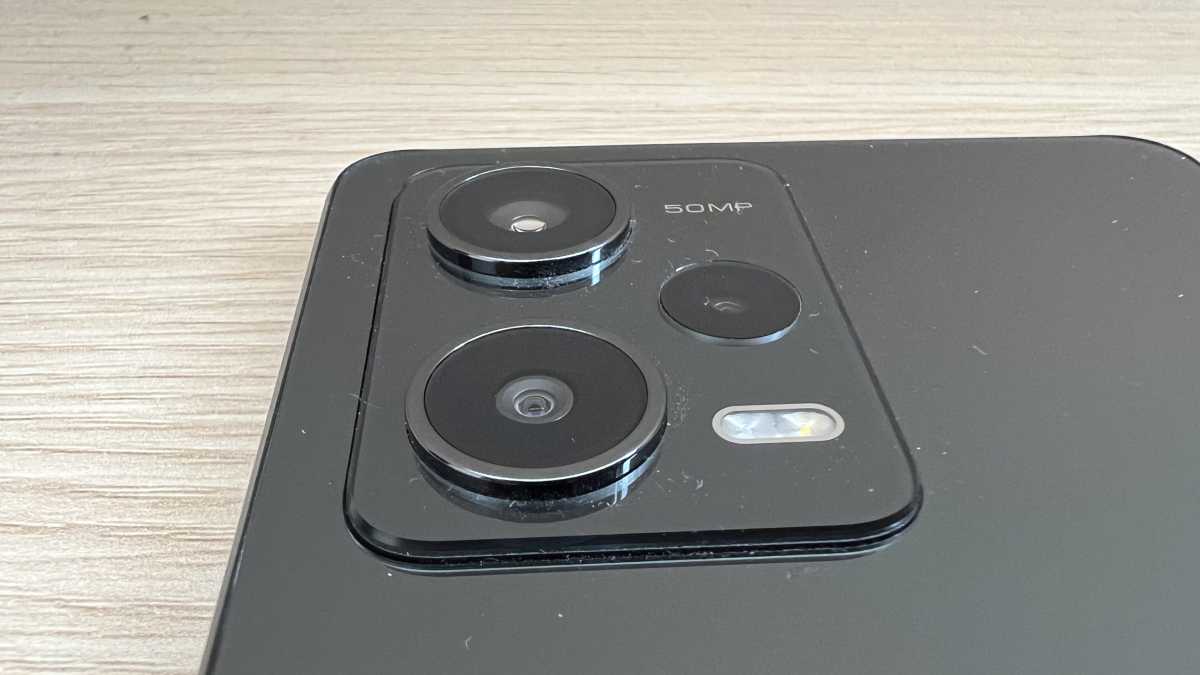
Anyron Copeman / Foundry
But you’ll want to use the main lens as much as possible. The 50Mp camera isn’t consistently great, but you can get some truly superb results.
That’s particularly apparent when taking landscape shots, where you’ll get an impressive level of detail and excellent dynamic range. Post-processing can oversaturate colours at times, but shots are mostly true to life. Most of my testing took place on a sunny day, but it’s arguably better suited to cloudy environments.
Exposure is a common issue on affordable phone cameras, but the 12 Pro handles it very well. In general, it manages to keep a foreground subject well-exposed without blowing out the background. As a result, I was able capture some very good shots of vivid skylines with relatively little effort.
Street photography and architecture images can look more washed out, so getting a good result depends more on the lighting and your willingness to experiment with angles and framing.
The 50Mp camera isn’t consistently great, but you can get some truly superb results
Without a dedicated depth sensor, you’ll also be relying on the main camera (and software) for portrait-style shots. It’s fun to use and you can get some nice results, but there are major edge detection issues almost every time. For subjects that often move around (such as pets or children), be prepared for plenty of unintentional blur.
Night mode also uses software to brighten low-light shots, but its subtle application here prevents them from looking artificial. With most key details preserved, it’s definitely worth using.
Sadly, the same can’t be said for the 8Mp ultrawide lens. A 120˚ field of view is useful, but colour accuracy, exposure and dynamic range are all significantly worse than the main lens.
I thought the 2Mp macro would suffer the same fate, but close-up shots from the Note 12 Pro are a surprising strength. It captures some excellent details that simply aren’t possible on many phone cameras.
The 16Mp front-facing camera can also churn out some really solid selfies. Detail and exposure are very good, while even the portrait mode is more successful here. For the best results, make sure you turn the beauty mode off.
Check out a range of camera samples in the gallery below:
It’s also worth mentioning video, especially with optical image stabilisation (OIS) on the main lens. Footage (up to 1080p at 60fps) with lots of movement is smoother as a result, yet still more juddery than many other phones – even when walking slowly.
Battery & charging
- 5000mAh battery
- All-day battery life for most people
- 67W wired charging
Xiaomi has equipped the Note 12 Pro with a 5000mAh battery, which lasts for a full day of moderate usage, although it can stretch to two if you only use your phone occasionally. Equally, several hours of high brightness, GPS and taking lots of photos means you’ll probably need to reach for the charger by early evening.
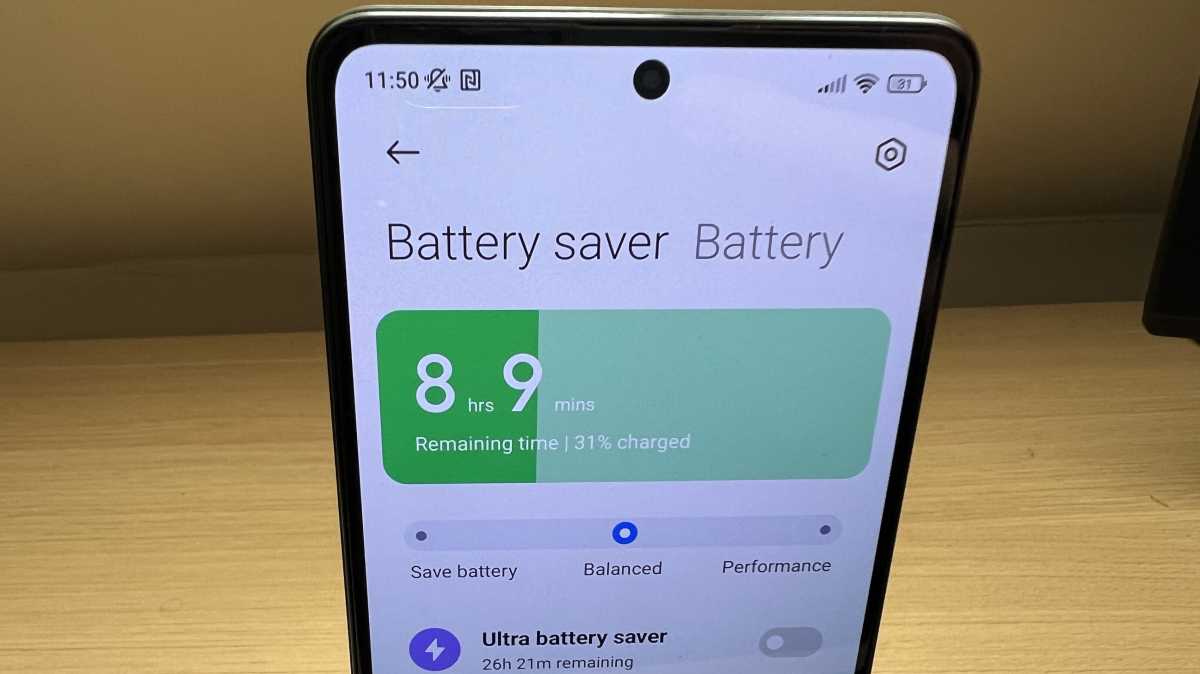
Anyron Copeman / Foundry
But the 12 Pro’s unremarkable battery life isn’t a cause for concern. It can’t rival the best battery life phones, but you won’t have to constantly worry about it running out either.
The 67W fast charging is also pretty nippy. It reached 43% in 15 minutes, then 79% by the half-hour mark, with a full charge taking just under 50 minutes.
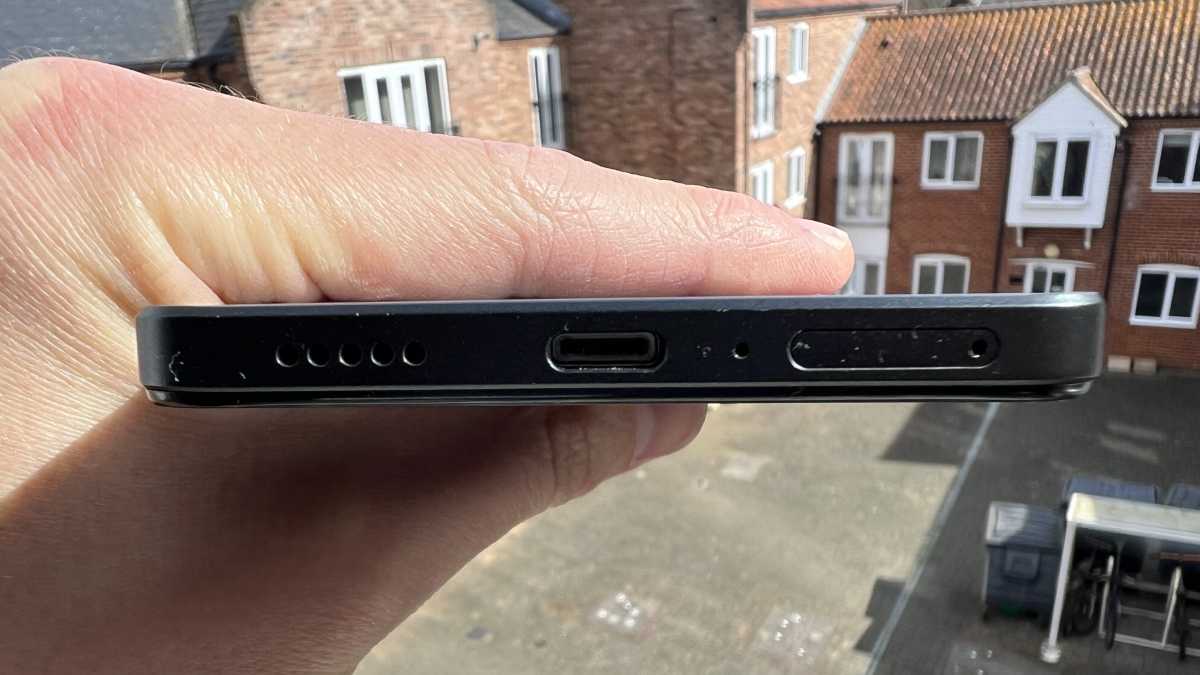
Anyron Copeman / Foundry
You’ll also have to make do without wireless charging, but that’s to be expected on such an affordable phone.
Software & updates
- MIUI 14 skin over Android 13
- Cluttered and annoying user experience
- Will get four years of updates
Redmi is a Xiaomi sub-brand, so all its phones also run the company’s MIUI skin. On the Note 12 Pro, it’s MIUI 14 at the time of writing, which is based on Android 13.
All the core elements of Google’s operating system are here, including the Discover feed to the left of the home screen and all-important Play Store, but plenty of other things have changed.
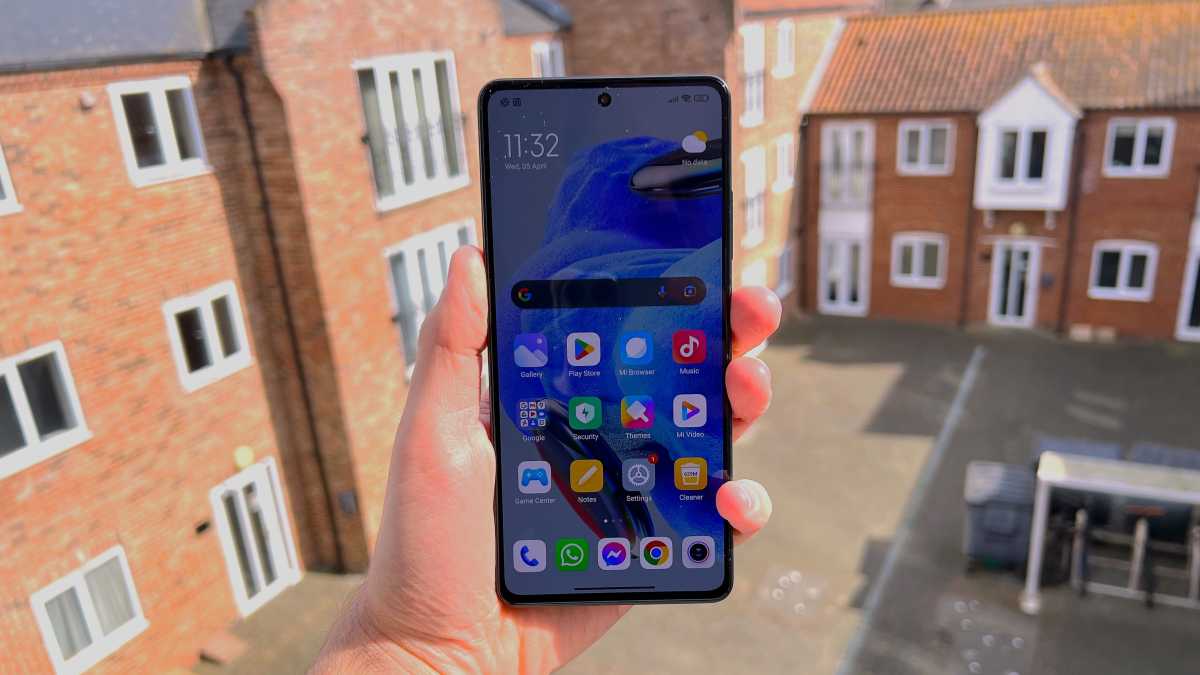
Anyron Copeman / Foundry
The first thing you’ll notice is the wealth of extra pre-installed software. Many of Google’s stock apps have been replaced with Xiaomi’s version, from notes and image gallery to web browser and file manager. It feels totally unnecessary, but I can live with it.
But Xiaomi has then added dozens of third-party apps that it seems to think you want to use. The selection appears to be completely random, with household names such as Facebook and Spotify joined by little-known casual games.
Within these folders, there are even ‘Recommendations’ for more apps you probably won’t want to download. It all feels very cluttered and confusing, but it’s worth spending a few minutes uninstalling or hiding most of these out of sight.
MIUI makes a lot of changes to ‘stock’ Android, but very few have a positive effect on the user experience
Something you will have to get used to, though, is the split quick settings and notification shade. Most Android phones combine them into one screen, but which you see here depends on where you swipe down from the top of the screen, much like on an iPhone. It’s fine once you get used to it, but doesn’t really add anything.
That’s a theme for the software experience more generally. MIUI makes a lot of changes to ‘stock’ Android, but very few have a positive effect on the user experience.
In terms of updates, Xiaomi commits to three years of Android version updates and four years of security. You should therefore expect updates to Android 14 through to 16, plus security patches until 2027.
Price & availability
While China has three different configurations of the Redmi Note 12 Pro to choose from, you only get one on the global version. As usual, it’s not available in North America.
It’s the entry-level model, offering 6GB of RAM and 128GB of storage, but costs just £339/€399. The phone is available SIM-free direct from Xiaomi in the UK (or Very) and Europe.
In the UK, you can also get the phone on contract via O2. Prices start at £26.14 per month with £20 upfront, with all plans including three months of Disney+ for free.
When you consider everything you’re getting here, that’s an excellent price.
The problem comes when you realise just how many great mid-range phones cost a similar amount. Google’s Pixel 6a, the OnePlus Nord 2T and Nothing’s Phone (1) are only slightly more expensive at full price, yet offer a more well-rounded experience for most people.
Verdict
The Note 12 Pro lacks the wow factor of the Pro+, but it’s arguably even better value for money. If you can live without a 200Mp camera and 120W charging, this is the Redmi Note 12 phone to get.
It retains the gorgeous 120Hz OLED screen, capable MediaTek Dimensity 1080 chipset, and solid 5000mAh battery, plus an excellent selfie camera.
Dropping down to a 50Mp main camera doesn’t feel like much of a compromise, and the 67W charging is still fast compared to the competition.
MIUI remains the single biggest reason not to buy it, especially when many rivals have a more polished software experience. Internal storage is also limited, so your money may be better spent elsewhere.
Specs
- Android 13 w/ MIUI 14
- 6.67in OLED 120Hz curved display, 20:9, HDR10+, Dolby Vision
- Side-mounted fingerprint sensor
- Gorilla Glass 5 (front only)
- MediaTek Dimensity 1080
- 6GB RAM
- 128GB UFS 2.2 non-expandable storage
- 50Mp, f/1.9 main camera with OIS
- 8Mp, f/2.2 120˚ ultrawide camera
- 2Mp, f/2.4 macro camera
- 16Mp, f/2.5 front-facing camera
- Dual stereo speakers
- Dual-SIM
- 5G
- Wi-Fi 6
- Bluetooth 5.2
- IP53
- USB-C
- 5000mAh battery
- 67W wired charging
- 163 x 76 x 8mm
- 187g
- Black, White or Blue colour options



